GE Profile PHS700AY Bedienungsanleitung
Lies die bedienungsanleitung für GE Profile PHS700AY (8 Seiten) kostenlos online; sie gehört zur Kategorie Herd. Dieses Handbuch wurde von 4 Personen als hilfreich bewertet und erhielt im Schnitt 4.8 Sterne aus 2.5 Bewertungen. Hast du eine Frage zu GE Profile PHS700AY oder möchtest du andere Nutzer dieses Produkts befragen? Stelle eine Frage
Seite 1/8

Questions? Call GE Appliances at 1.800.GE.CARES (1.800.432.2737) or visit
GEAppliances.com.
BEFORE YOU BEGIN
Read these instructions completely and carefully.
•
IMPORTANT
–
Save these instructions for
local inspector’s use.
•
IMPORTANT
–
Observe all governing codes
and ordinances.
• Note to Installer
–
Be sure to leave these
instructions with the Consumer.
• Note to Consumer
–
Keep these instructions
for future reference.
• Note to Servicer – The electrical diagram is
in an envelope attached to the left side panel,
when the drawer is removed.
• Proper installation is the responsibility of
installer.
• Product failure due to improper installation is
not covered under the Warranty.
• IMPORTANT — Remove all packing material
and literature from oven before connecting gas
and electrical supply to range.
•
Skill level – Installation of this appliance
requires basic mechanical skills and advanced
electrical skills.
FOR YOUR SAFETY:
If you did not receive an anti-tip bracket with your
purchase, call 1.800.626.8774 to receive one at
no cost. For installation instructions of the bracket,
visit: GEAppliances.com.
Remove any
currently used
anti-tip bracket
and install with
the provided
anti-tip bracket and
screws.
WARNING
Before beginning the
installation, switch
power off at service
panel and lock the
service disconnecting
means to prevent power
from being switched on
accidentally. When the
service disconnecting
means cannot be
locked, securely fasten
a prominent warning
device, such as a tag,
to the service panel.
Anti-Tip
Bracket
and
screws
Included
• A child or adult can tip the range and be killed.
• Install the anti-tip bracket provided with the unit
to the wall or floor.
• Engage the range to the anti-tip bracket by sliding the
range back such that the foot is engaged.
• Re-engage the anti-tip bracket if the range is moved.
• Failure to do so can result in death or serious burns
to children or adults.
Tip-Over Hazard
WARNING
MATERIALS YOU MAY NEED
TOOLS YOU WILL NEED
Squeeze Connector
(For Conduit
Installations Only)
(UL Listed 40 AMP)
4-Wire Cord 4’ long OR
3-Wire Cord 4’ long
Drill
Safety Glasses
Adjustable Wrench
Phillips Screwdriver
Level
Tape Measure
Pliers
1/4” Nut Driver
PROPER DISPOSAL OF YOUR
APPLIANCE
Dispose of or recycle your appliance
in accordance with Federal and Local
Regulations. Contact your local authorities for
the environmentally safe disposal or recycling
of your appliance.
WARNING
Remove existing anti-tip
bracket from install space, if present.
Installation Instructions
Electric Ranges
DIMENSIONS AND CLEARANCES
Make sure the wall covering, countertop,
flooring and cabinets around the range can
withstand the heat (up to 200°F) generated by
the range.
Allow 30” minimum clearance between surface
units and bottom of unprotected wood or metal
cabinet, or allow a 24” minimum when bottom
of wood or metal cabinet is protected by no
less than 1/4” thick flame retardant millboard
covered with not less than No 28 MSG sheet
metal, (.015”), .015” thick stainless steel, .024”
aluminum or .020” copper.
Orient electrical receptacle so the length is
parallel to floor.
This appliance has been approved for 0”
spacing to adjacent surfaces above the
cooktop. However, a 6” minimum spacing to
surfaces less than 15” above the cooktop and
adjacent cabinet is recommended to reduce
exposure to steam, grease splatter and heat.
To reduce the risk of burns or fire when
reaching over hot surface elements, cabinet
storage space above the cooktop should be
avoided. If cabinet storage space is to be
provided above the cooktop, the risk can be
reduced by installing a range hood that projects
at least 5” beyond the front of the cabinets.
Cabinets installed above the cooktop must be
no deeper than 16”.
Recommended
Wall-mounted
0”
Minimum
to cabinets
below
cooktop
30”
(see note)
0”minimum
to cabinets
above
counter
30”
0” Right side
0” Left side
Minimum
to side wall
36”
30”
3 1/4”
6 1/2”
24”
23 3/4”
3 1/8”
Side Wall
Electrical
supply
NOTE: Use a 4’ power cord to
prevent interference with the
storage drawer. Power cords
41⁄2’ to 6’ long may have to
be dressed to allow for proper
drawer closing.
1
REMOVE PACKAGING MATERIALS:
Failure to remove packaging materials could
result in damage to the appliance. Remove
all packing parts from oven, racks, heating
elements and drawer. Also, remove protective
film and labels on the outer door, cooktop and
control panel.
Consider recycling options for your appliance
packaging material.
REAR CONTROL
47
1/2"
Door Open
30"
NOTE: Rear wall to
front of door glass.
25 1/2"
w/o handle
10 3/4"
35
5/8"
to
36
1/2"
27
7/8"
with
handle
FRONT CONTROL
30"
5/8"
28 5/8"
with handle
35
5/8”
to
36
1/2”
NOTE: Rear wall to
front of door glass.
26
1/4"
w/o handle
48
1/4"
Door Open
NOTE: Minimum to
bare cabinet above: see
Installation Instructions
for alternate installation
configurations.

2
ATTACH REQUIRED FILLER
TRIM
For ALL front control installations, the
included filler trim must be installed. Remove
the two screws on rear trim indicated with
nearby arrows. Reuse these two screws to
attach the filler trim to the back of the range.
3
ELECTRICAL CONNECTIONS
WARNING
This appliance must be
properly grounded. Failure to do so can
result in electric shock.
WARNING
All new constructions,
mobile homes, recreational vehicles and
installations where local codes do not
allow grounding through neutral, require a
4-conductor UL-listed range cord.
WARNING
To prevent fire or shock,
do not use an extension cord with this
appliance.
WARNING
To prevent shock, remove
house fuse or open circuit breaker before
beginning installation.
We recommend you have the electrical wiring
and hookup of your range connected by a
qualified electrician. After installation, have
the electrician show you how to disconnect
power from the range.
You must use a single-phase, 120/208 VAC
or 120/240 VAC, 60 hertz electrical system.
If you connect to aluminum wiring, properly
installed connectors approved for use with
aluminum wiring must be used.
Effective January 1, 1996, the National
Electrical Code requires that new
construction (not existing) utilize a
4-conductor connection to an electric range.
When installing an electric range in new
construction, mobile home, recreational
vehicle, or an area where local codes prohibit
grounding through the neutral conductor,
refer to the section on four-conductor branch
circuit connections.
Check with your local utilities for electrical
codes which apply in your area. Failure to
wire your oven according to governing codes
could result in a hazardous condition. If there
are no local codes, your oven must be wired
and fused to meet the National Electrical
Code, NFPA No. 70 – latest edition, available
from the National Fire Protection Association.
This appliance must be supplied with the
proper voltage and frequency, and connected
to an individual, properly grounded, 40 amp
(minimum) branch circuit protected by a
circuit breaker or time-delay fuse.
Use only a 3-conductor or a 4-conductor
UL-listed range cord. These cords may be
provided with ring terminals on wire and
a strain relief device. A range cord rated
at 40 amps with 125/250 minimum volt
range is required. A 50 amp range cord is
not recommended but if used, it should be
marked for use with nominal 1 3⁄8” diameter
connection openings. Care should be taken
to center the cable and strain relief within
the knockout hole to keep the edge from
damaging the cable.
The rating plate is located on the frame
surrounding the drawer.
3
ELECTRICAL CONNECTIONS
(cont.)
Rating plate
4
POWER CORD AND
CONDUIT INSTALLATION
(cont.)
B. For power cord and 1” conduit only,
remove the knockout ring (1 3⁄8”) located
on bracket directly below the terminal
block. To remove the knockout, use a pair
of pliers to bend the knockout ring away
from the bracket and twist until ring is
removed.
C. For power cord installations only (see the
next step if using conduit), assemble the
strain relief in the hole. Insert the power
cord through the strain relief and tighten.
Allow enough slack to easily attach the
cord terminals to the terminal block. If tabs
are present at the end of the winged strain
relief, they can be removed for better fit.
NOTE: Do not install the power cord
without a strain relief. The strain relief
bracket MUST be installed before
reinstalling the rear range wiring cover.
D. For 3/4” conduit installations only, purchase
a squeeze connector matching the
diameter of your conduit and assemble
it in the hole. Insert the conduit through
the squeeze connector and tighten. Allow
enough slack to easily attach the wires to
the terminal block. Do not install NOTE:
the conduit without a squeeze connector.
The squeeze connector MUST be installed
before reinstalling the rear range wire or
terminal block cover.
PROCEED TO STEP 4 OR 5.
4
POWER CORD AND
CONDUIT INSTALLATION
A. Remove wire cover (on the back of
range) by removing screws using a 1/4”
nut driver. You can access the terminal
block by removing the wire cover. Do not
discard these screws.
Wire cover
Wire
Cover
Screws
Back of range
Knockout
ring in
bracket
Knockout
ring removed
Terminal block
(appearance
may vary)
Power cord
Strain relief
Terminal
block
Bracket
Squeeze
connector
Terminal block
Conduit
Bracket
5
3-WIRE INSTALLATION
WARNING
The neutral or ground wire
of the power cord must be connected to the
neutral terminal located in the center of the
terminal block and the ground strap must
connect the neutral terminal to the ground
plate. The power leads must be connected to
the lower left and the lower right terminals of
the terminal block.
DO NOT remove the ground strap
connection.
FOR POWER CORD INSTALLATION
A. Remove the 3 lower terminal screws from
the terminal block.
B. Insert the
3 terminal
screws
through
each
power cord
terminal
ring and
into the
lower
terminals of
the terminal
block. Be
certain that the center wire (white/neutral)
is connected to the center lower position
of the terminal block.
C. Tighten screws securely into the terminal
block.
FOR CONDUIT INSTALLATION
A. Loosen the 3 lower terminal screws on
the terminal block. Strip wire to expose tip
about 5/8” long.
B.
Insert the center (white/neutral) wire tip
through the bottom center terminal block
opening. On
certain models, the
wire will need to be
inserted through
the ground strap
opening and then
into the bottom
center block
opening. Insert the
two side bare wire
tips into the lower
left and the lower
right terminal block openings.
C. Tighten the screws until the wire is firmly
secured (35 to 50 inch-lbs.). Do not over-
tighten the screws.
Terminal block
(appearance
may vary)
Power cord
Power Cord
Neutral terminal
Ground strap
Ground
plate
Wire
tips
Terminal
block
Conduit
Conduit
Screws
Filler Trim
Rear Trim
Arrows on
both sides
Back of Range

5
3-WIRE INSTALLATION (cont.)
NOTE: ALUMINUM WIRING: Aluminum
building wire may be used but it must be rated
for the correct amperage and voltage.
D. Replace wire cover on range back and
replace the screws that were removed
earlier. Make sure no wires are pinched
between cover and range back.
PROCEED TO STEP 6.
6
4-WIRE INSTALLATION
WARNING
The neutral wire of the supply
circuit must be connected to the neutral terminal
located in the lower center of the terminal block.
The power leads must be connected to the
lower left and the lower right terminals of the
terminal block. The grounding lead must be
connected to the range with the ground plate
and the green ground screw.
FOR POWER CORD INSTALLATION
A. Remove the 3 lower terminal screws from
the terminal block. Remove the ground
screw and ground plate and retain them.
Remove and discard the ground strap. DO
NOT DISCARD ANY SCREWS.
B. Insert the one ground screw into the power
cord ground wire terminal ring, through the
ground plate and into the range.
C. Insert the 3
terminal screws
(removed earlier)
through each
power cord
terminal ring and
into the lower
terminals of the
terminal block.
Be certain that
the center wire
(white/neutral) is connected to the center
lower position of the terminal block. Tighten
screws securely into the terminal block.
6
4-WIRE INSTALLATION (cont.)
D. Replace wire cover on range back and
replace the screws that were removed
earlier. Make sure no wires are pinched
between cover and range back.
FOR CONDUIT INSTALLATION
A. Loosen the 3 lower terminal screws on the
terminal block. Strip wire to exposed tip
about 5/8” long.
B. Insert the center (white/neutral) wire tip
through the bottom center terminal block
opening. On certain models, the wire will
need to be inserted through the ground strap
opening and then into the bottom center
block opening. Insert the two side bare wire
tips into the lower left and the lower right
terminal block openings.
C. Tighten the screws until the wire is firmly
secured (35 to 50 inch-lbs.). Do not over-
tighten the screws.
NOTE: ALUMINUM WIRING: Aluminum
building wire may be used but it must be rated
for the correct amperage and voltage.
Before–Power Cord and Conduit
Terminal
block
Neutral terminal
Ground
strap
Ground strap
Ground plate
Terminal
block
Ground
screw
After–Power Cord
Ground
plate
(grounding
to range)
After–Conduit
Terminal
block
Ground
plate
(grounding
to range)
Wire
tips
Ground
screw
7
ANTI-TIP DEVICE INSTALLATION
To reduce the risk of tipping the range, the
range must be secured by a properly installed
anti-tip bracket. Remove any currently used
anti-tip bracket and install with the provided
anti-tip bracket.
1. IMPORTANT: Determine the final location
of the range before attempting to install the
bracket. Remove existing anti-tip bracket
from install space, if present.
a. Place the bracket on the floor with the
back edge against the rear wall. If the
range does not reach the rear wall, align
the back edge of the bracket with the rear
panel of the range in its final location.
If bracket does not touch the rear wall,
you MUST screw bracket to FLOOR as
described in Step 2.
b. Position the side of the bracket against
either the left or right cabinet. If there is
no adjacent cabinet, align the edge of
the bracket with the side panel of the
range in its final location. If the countertop
overhangs The cabinet, offset the bracket
from the cabinet by the amount of
overhang.
c. Mark the location for the pair of holes to be
used (see illustration above).
: For FLOOR installation use either NOTE
Loc A or B. For REAR WALL installation
use Loc C.
2. The bracket must be screwed to either the
FLOOR or REAR WALL.
FLOOR Installation:
WOOD FLOOR: Use the screws provided to
secure the bracket using the pair of marked
holes (either Loc A or B).
CONCRETE FLOOR: Using a concrete
bit, drill a 5/32” pilot hole 2” deep into the
concrete at the center of each of the marked
holes (either Loc A or B). Use the screws
provided to secure the bracket into the floor.
REAR WALL Installation:
Use the 2 screws provided to secure the
bracket using the pair of marked holes at
Loc C. The screws MUST enter into a wood
sill plate. If the wall contains any metal studs
or similar materials, then the floor must be
used.
3. To check if the bracket is installed and
engaged properly, look underneath the
range to see that the rear leveling leg is
engaged in the bracket. On some models,
the storage drawer or kick panel can be
removed for easy inspection. If visual
inspection is not possible, slide the range
forward, confirm the anti-tip bracket is
securely attached to the floor or wall, and
slide the range back so the rear leveling
leg is under the anti-tip bracket. If your
range is removed for cleaning, servicing,
or any reason, be sure the anti-tip device
is reengaged properly when the range is
replaced. Failure to take this precaution
could result in tipping of the range and can
result in death or serious burns to children
or adults. Never completely remove the
leveling legs or the range will not be secured
to the anti-tip device properly.
Anti-Tip
Bracket Kit
Included
Loc A
Loc B
Loc C
Two screws must enter floor
at Loc A or B or wall at Loc C.
Rear Wall
Screw must enter
wood or concrete
Attachment to Floor or Rear Wall
Wall Sill Plate
Screw must enter wood
Bracket
• A child or adult can tip the range and be killed.
• Install the anti-tip bracket provided with the unit
to the wall or floor.
• Engage the range to the anti-tip bracket by sliding the
range back such that the foot is engaged.
• Re-engage the anti-tip bracket if the range is moved.
• Failure to do so can result in death or serious burns
to children or adults.
Tip-Over Hazard
WARNING
Produktspezifikationen
| Marke: | GE |
| Kategorie: | Herd |
| Modell: | Profile PHS700AY |
Brauchst du Hilfe?
Wenn Sie Hilfe mit GE Profile PHS700AY benötigen, stellen Sie unten eine Frage und andere Benutzer werden Ihnen antworten
Bedienungsanleitung Herd GE
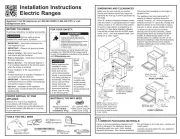
2 Juli 2025
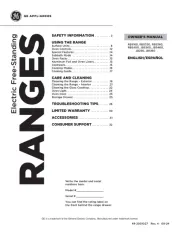
24 Juni 2025
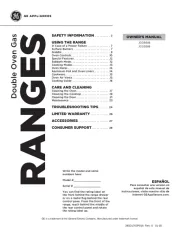
24 Juni 2025
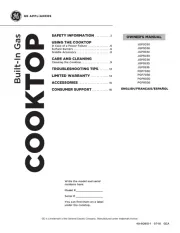
23 Juni 2025
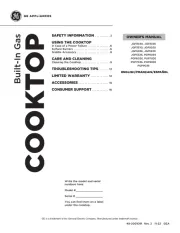
13 Juni 2025
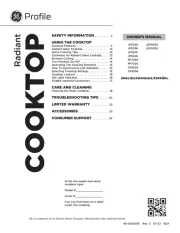
13 Juni 2025

25 November 2024

15 August 2024

10 August 2024

5 August 2024
Bedienungsanleitung Herd
- Asko
- Fisher & Paykel
- Scarlett
- Kernau
- Ulma
- Piazzetta
- ATTACK
- Einhell
- ECG
- BORA
- Fagor
- Max Blank
- Sencor
- Kero
- Tesy
Neueste Bedienungsanleitung für -Kategorien-

1 Juli 2025

1 Juli 2025
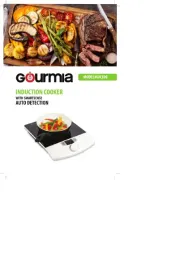
1 Juli 2025

1 Juli 2025

1 Juli 2025
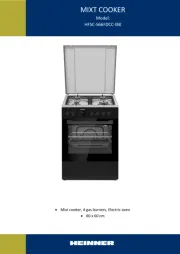
1 Juli 2025

1 Juli 2025
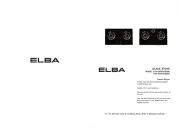
1 Juli 2025

1 Juli 2025
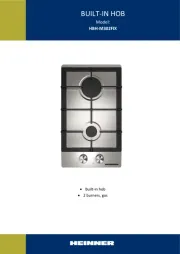
1 Juli 2025